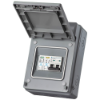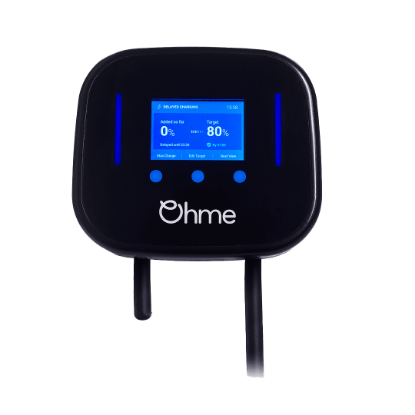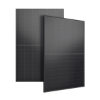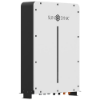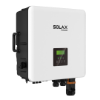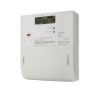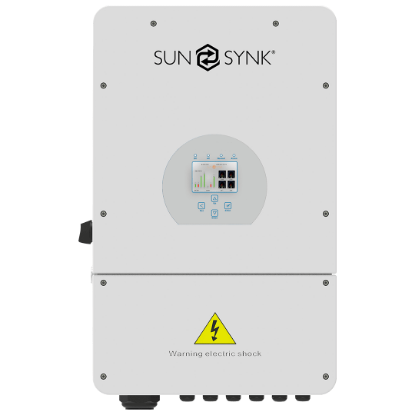Installing solar panels can be a smart investment – they reduce electricity bills and carbon emissions. But upfront costs might make you wonder if any grants or funding can help. Good news: in the UK there are several solar panel funding incentives available as of May 2025 that can significantly lower installation costs. While there isn’t a universal “free solar panels for everyone” grant, you can benefit from government schemes and tax breaks to make going solar more affordable. In this guide, we’ll break down the current UK solar panel grants, funding options, and incentives, including 0% VAT relief, the ECO4 scheme for free solar panels, the new Warm Homes Plan, and regional programs in Scotland, Wales and Northern Ireland. We’ll also look at how these measures impact the cost of a solar panel installation and your long-term savings.
(If you’re new to solar technology, check out our primer on how solar panels work to understand the basics of PV systems and the installation process or our post on are solar panels worth it 2025.)
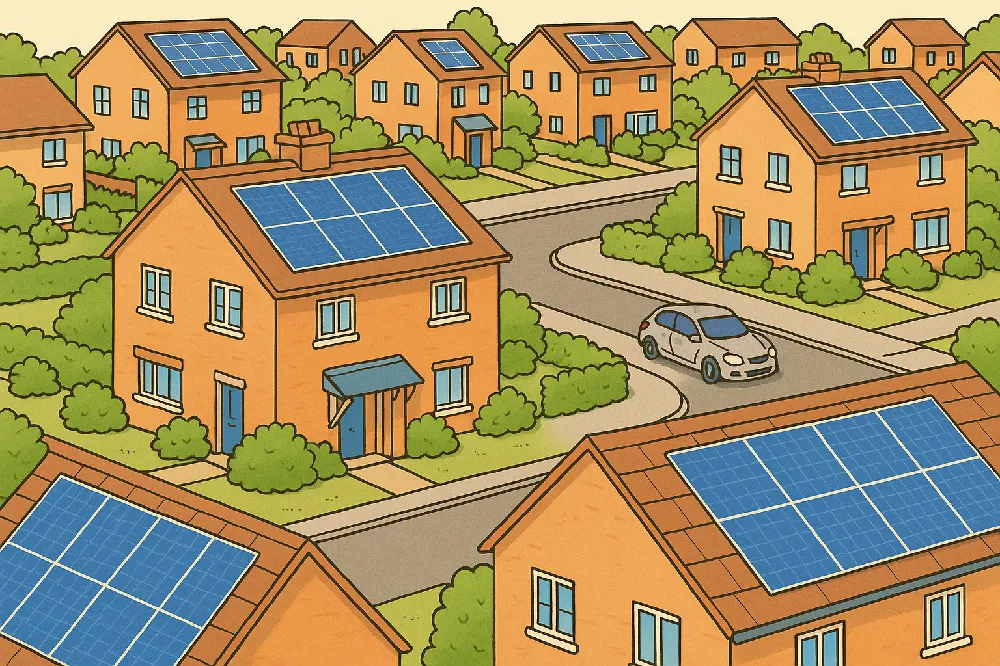
Are there UK grants for solar panels in 2025? Strictly speaking, there is no blanket grant that gives every household free solar panels. However, the government has introduced funding schemes and incentives that effectively reduce the cost. Key support measures include:
- 0% VAT on solar panels and batteries (2022–2027) – You pay no VAT on home solar installations, which effectively gives a ~5% discount. This tax break alone can save around £1,000 or more on a typical 4kW solar panel system.
- Smart Export Guarantee (SEG) – This program ensures you get paid for surplus solar energy you export to the grid. SEG payments can earn the average household about £80–£170 per year in extra income.
- ECO4 Scheme – Part of the Energy Company Obligation, ECO4 can provide free solar panels (up to 100% funded) for eligible low-income households. It runs until March 2026 and targets those in fuel poverty.
- Warm Homes Plan (from April 2025) – A newly launched government plan offering up to £30,000 per home for energy improvements, including solar panels, for social housing tenants, lower-income households and renters. This is a major boost for those who qualify.
- Devolved Administration Programs – Scotland had the Home Energy Scotland loan/grant (now closed for solar PV), Wales has the Nest scheme offering free solar in some cases, and Northern Ireland provides some support via its Sustainable Energy Programme.
In the sections below, we’ll dive into each of these funding options, explaining what’s available, who is eligible, and how to apply. By combining these incentives, UK homeowners can dramatically cut the net cost of a solar panel installation. In some cases, you might even get panels installed for free. Let’s explore the details.
0% VAT on Solar Panels & Batteries
One of the simplest but most impactful incentives is the zero VAT rate on solar panels and related equipment. Since 1 April 2022, the UK government has made solar panels, solar batteries, and other energy-saving materials 0% VAT-rated. This policy will remain in effect until 31 March 2027. Previously, these products carried a reduced 5% VAT for certain eligible homes – but now 0% VAT applies for everyone regardless of income or property type. This effectively knocks off the VAT that would normally be added to your solar installation bill.
How much do you save with 0% VAT?
On average, a standard 4kW home solar system might cost around £5,000 – £6,000 (including panels, inverter, etc.). With 0% VAT, you save the ~5% tax that would otherwise be added. For example, a £6,000 system would have incurred £300 in VAT at 5% – now you save that £300 due to the 0% rate. According to government estimates, households save up to £2,850 on an average installation thanks to the zero VAT. (this figure likely factors in both VAT and typical price drops). Importantly, the removal of VAT also simplified things by removing old eligibility rules – previously, only certain people (e.g. over 60 or receiving benefits) or installations to existing dwellings qualified for the lower 5% VAT. Now, anyone installing solar panels or battery storage at home qualifies for 0% VAT, with no application needed – your installer will simply apply 0% VAT automatically on the invoice.
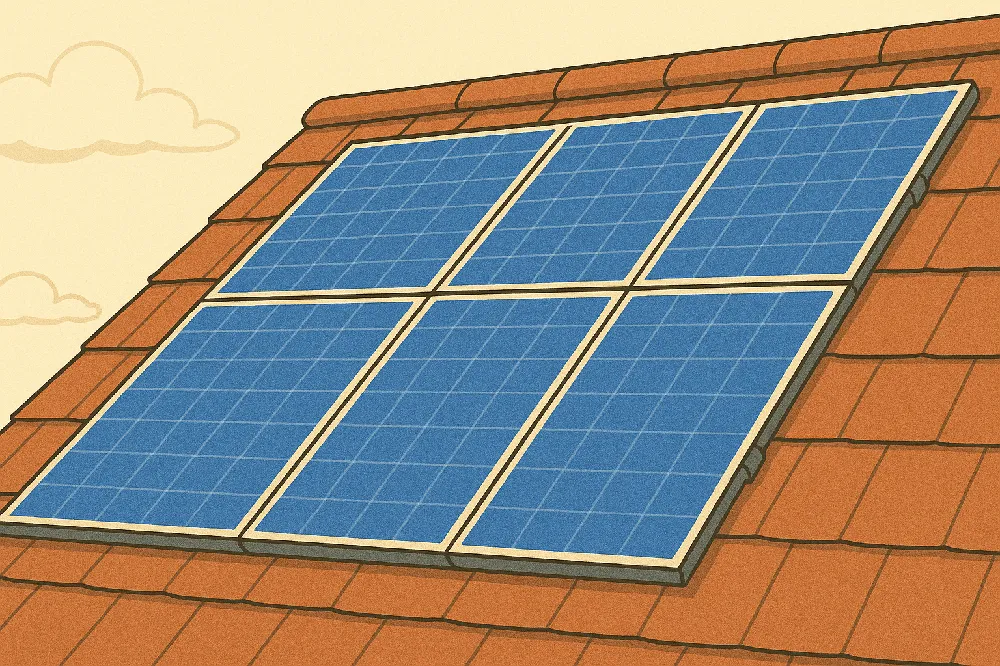
Including a battery? The 0% VAT covers not just the panels but also solar batteries and other equipment like inverters and mounting. Adding a battery storage system to capture excess daytime energy can further increase your savings (by letting you use solar power at night). With the VAT break, a £4,000 battery now also avoids the £200 VAT that would have applied. This makes technologies like solar battery storage more affordable if you’re considering a full home solar setup. Keep in mind that battery systems still add significant cost, but they may qualify for other finance schemes (like interest-free loans in some regions).
Overall, the zero VAT incentive is an easy win – it requires no paperwork from the homeowner and applies automatically. If you are comparing quotes, ensure any quote for a domestic solar panel installation in the UK is excluding VAT (at 0%). This tax relief is essentially a government-funded discount to encourage more households to go green.
Smart Export Guarantee (SEG)
While not a grant up-front, the Smart Export Guarantee (SEG) is a funding mechanism that pays you for the solar energy you export to the grid. After the old Feed-in Tariff was closed to new applicants in 2019, SEG was introduced in January 2020 to ensure people with solar panels can still earn money from their excess power. Under SEG, participating electricity suppliers must offer a tariff (payment) for each unit of electricity your solar PV system exports.
How does SEG work?
When your panels produce more electricity than your home is using at that moment, the surplus flows to the national grid. With a SEG tariff, your supplier will pay you for each kilowatt-hour (kWh) of that exported energy. Rates are set by suppliers in a competitive market, so you can shop around for the best deal (and you’re allowed to sign up for SEG with a different company than the one you buy power from). Currently, SEG export rates range roughly from 2p up to 15p per kWh depending on the provider and tariff type. Many suppliers offer around 4–6p/kWh as a base rate, though a few (like Octopus Energy’s special SEG tariffs) pay more for smart time-of-export or battery participation.
For an average home solar array (3–4 kW) that exports maybe 1,500–1,800 kWh/year of its production, SEG might earn on the order of £80 – £170 per year. Some households with larger systems or very low daytime usage could earn a bit more (e.g. ~£200+). While SEG won’t cover your whole investment, it’s a nice income stream that improves the return on your solar panels. Essentially, it’s money for energy you weren’t using anyway!
Eligibility: All homeowners in Great Britain with solar PV up to 5MW capacity are eligible to sign up for SEG. You’ll need a smart meter (to measure exported electricity) and your solar PV system must be certified (MCS certified installer and equipment). SEG is not a government handout but rather a market obligation on suppliers – nonetheless, it is backed by government regulation. You can read the official guidance on the UK Government’s SEG page for more details. It’s worth noting SEG is guaranteed in the sense suppliers must offer at least something, but you should compare offers – some pay as low as 1.5p/kWh while others pay 10p or more. Contracts typically have no fees; you simply receive credits on your bill or payments for the exported units tracked by your meter.

ECO4 Scheme – Free Solar Panels for Eligible Homes
The ECO4 scheme is a government-backed grant program that can cover up to 100% of the cost of solar panels (and other measures) for those who qualify. ECO stands for Energy Company Obligation – it’s funded by major energy suppliers who are obliged to improve energy efficiency in the homes of vulnerable and low-income households. ECO4 is the fourth phase of the scheme, running from April 2022 to March 2026, with around £4 billion allocated to upgrade homes across Great Britain.
Under ECO4, energy suppliers install improvements like insulation, heating upgrades, and solar PV systems at little or no cost to the household. The goal is to tackle fuel poverty by lowering bills and to reduce carbon emissions. Solar panels are one of the measures included – especially for homes that use electric heating, where rooftop PV can significantly offset expensive electricity usage.
Who is eligible for ECO4?
The scheme targets those on certain income-based benefits or considered “low-income, vulnerable, or fuel-poor.” You typically qualify if you:
- Receive specific benefits such as Universal Credit, Pension Credit, Income Support, income-based Jobseeker’s Allowance, income-related ESA, Housing Benefit, or Tax Credits. Child Benefit recipients can also qualify if your household income is below set thresholds (e.g. under ~£31,000 for a couple with children).
- Live in social housing with low energy efficiency (EPC rating D, E, F or G) – such properties are eligible for upgrades under ECO4.
- Have a low income or special vulnerability but don’t receive the listed benefits – you might still qualify via your local council under “ECO4 Flex”. Councils can refer households with incomes under £31k, or people with health conditions made worse by cold, etc., to be included.
In practice, eligibility can be a bit complex, and not every eligible home will get solar panels specifically. The energy companies assess each home and choose measures that will improve the Energy Performance Certificate (EPC) rating cost-effectively. Solar PV is generally offered under ECO4 to homes that have electric heating systems (no mains gas), since those homes benefit most from generating electricity. If you have gas heating, they might prioritize loft insulation, heat pumps, or other measures first.
How to apply: You don’t exactly “apply” centrally for ECO4; rather, you contact an obligated energy supplier or installer. Major suppliers (British Gas, E.ON, OVO, etc.) have ECO teams. You can also go via local council schemes or trusted retrofit installers that participate in ECO. There’s no harm in contacting a few to compare – ultimately the funding comes from the energy companies but different contractors may offer different solutions. The process usually involves: an assessment of your home’s current insulation/heating, checking your benefit status or income, then proposing a package of upgrades. If solar panels are part of that package, they will be installed by the scheme’s contractors at no cost or heavily subsidized.
Keep in mind that ECO4 is aimed at those most in need. If you’re not in that category, other incentives like the VAT relief and SEG will be your main supports. For those who do qualify, ECO4 has been a game-changer – some households have received a full solar panel system for free, which can save £300–£500 a year on electricity bills. As of late 2024, over 29,000 solar PV installations had been completed under ECO4, though this is only a small fraction of total measures. If you think you might be eligible, definitely reach out through your energy provider or council for more information.
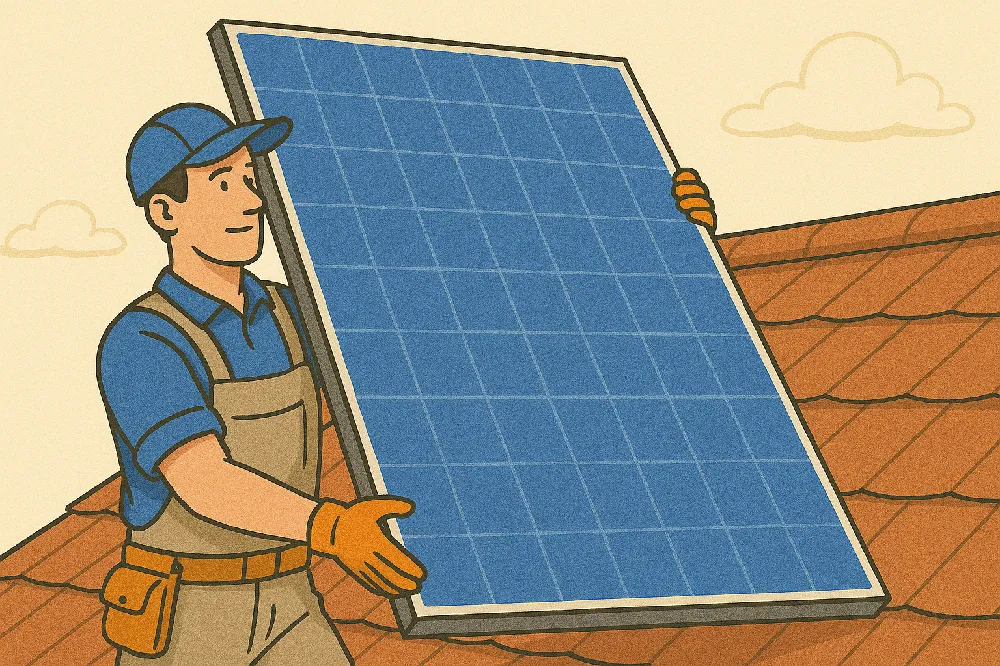
Tip: If you don’t qualify for ECO4 but still want help with upfront costs, check if your council runs any solar group-buying schemes. For example, Solar Together is a popular initiative in many areas where households join a collective purchase to get bulk discounts on vetted solar installations. It’s not a grant, but it can knock ~10–20% off the price. Always be wary of any unsolicited offers of “free solar panels” outside of official schemes – legitimate programs won’t cold-call you out of the blue. ECO4 and council schemes are the safe routes for assistance.
Warm Homes Plan (2025) – New Funding for Low-Income Households
In early 2025, the UK government (under its updated climate and fuel poverty strategy) introduced the Warm Homes Plan – a significant new program to fund home energy upgrades. Announced as part of the Spring 2025 budget, this plan is set to run from April 2025 through 2028 and will provide targeted financial support for installing measures like solar panels, heat pumps, and insulation in the homes of those who need it most. The Warm Homes Plan is a cornerstone of the government’s effort to achieve higher living standards and lower bills (“Plan for Change”) by improving housing energy efficiency.
What does it offer? Qualifying households can receive up to £30,000 in funding for approved home improvements. This is a huge amount – essentially covering most or all of the cost for a full solar PV system (and potentially other upgrades like a battery or new heating). The funding isn’t a cash payout to residents, but rather a grant that pays installers to carry out the work. For solar panels, the grant can cover equipment and installation so the household benefits from free or heavily subsidized solar power. The aim is to make renewable energy accessible to groups who might otherwise never afford the upfront investment. By the end of 2028, the plan expects to have helped hundreds of thousands of UK households become more energy efficient, cutting both carbon emissions and energy costs.
Who is eligible? The Warm Homes Plan focuses on:
- Social housing residents – Tenants in housing association or council properties are included, as this housing stock often lags in energy efficiency. Solar panels on social housing can directly lower tenants’ electricity bills.
- Lower-income homeowners – Households with a combined annual income below £31,000 qualify for support. This income threshold aligns with definitions of fuel poverty and picks up many working households not on benefits but still struggling with high energy costs.
- Renters in the private sector – Renters can be eligible too (a notable inclusion), provided they have their landlord’s permission to install improvements. This addresses the “split incentive” problem by giving landlords funding to improve properties for their tenants’ benefit.
Other factors will be considered as well, such as the current energy performance of the home (likely an EPC assessment will be done to see what measures are most needed). The scheme uses a flexible approach: local councils may have some discretion to include households just outside strict criteria if they deem it necessary (similar to ECO Flex). For example, a household slightly above the income cut-off but with high medical vulnerability might still be helped. The overarching goal is to target fuel poverty – so expect the eligibility to focus on those paying a large portion of income on energy.
How to apply: Details are being rolled out, but the process is expected to involve local authorities and a government portal. Here’s a general guide:
- Check eligibility and register interest – Visit the official government website or your local council’s website for the Warm Homes Plan. (For instance, see the government’s announcement of the plan for initial info.) You will likely either fill in an online form or call a designated hotline to verify basic eligibility.
- Submit an application – Starting from April 2025, eligible residents can apply through the Department for Energy Security and Net Zero’s portal or via council referrals. You’ll need to provide proof of income (or benefits), and if renting, documentation of landlord consent.
- Home assessment – If your application is approved, a professional assessor will visit your home to perform a retrofit assessment. They’ll determine what improvements make sense (e.g. is your roof suitable for solar panels, do you need insulation first, etc.).
- Installation – Approved measures will then be installed by certified contractors arranged through the scheme. For solar panels, this means accredited installers will fit the system at no or minimal cost to you, funded by the plan. After installation, you enjoy the benefits of lower bills! There may be some inspections or follow-ups to ensure quality.
The Warm Homes Plan is a major development because it explicitly includes funding for solar panel installations for low-income households and renters – groups that previously had limited access to renewables. By covering such a large portion of costs, this plan should help democratize solar adoption. According to government statements, the plan will mean “lower bills and warmer homes for millions of families”. Indeed, a family benefiting from free solar panels could save several hundred pounds per year on electricity, improving affordability of energy in the long run.
If you think you might qualify, keep an eye on GOV.UK for the official application details, or contact your local council’s energy/affordable warmth team. The rollout will ramp up through 2025. Note: This scheme is separate from ECO4 – even if you missed out on ECO, the Warm Homes Plan could be another opportunity to get support. (It’s also funded differently, via direct government investment.) For more information straight from the source, see the government’s news release on the plan.
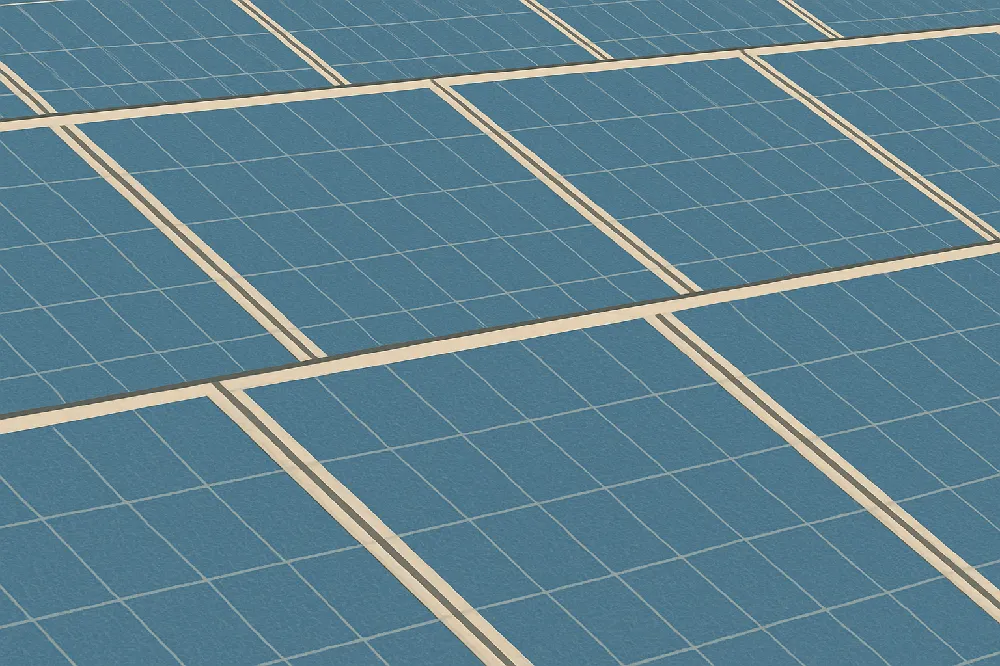
Solar Panel Grants in Scotland, Wales & Northern Ireland
While many UK solar incentives are national, each devolved nation also has (or had) its own funding options. Here’s what’s available in May 2025:
Scotland – Home Energy Scotland (Solar Funding Paused)
The Home Energy Scotland Grant and Loan scheme was one of the most generous in the UK, offering up to £7,500 in grants and £7,500 in interest-free loans for solar PV and battery systems. This could cover much of a typical domestic installation.
However, as of June 2024, the scheme stopped accepting new applications for solar panels and battery storage due to budget limits. If you applied before the cut-off, your application is still being processed. Otherwise, funding for solar is currently unavailable.
That said:
Other upgrades such as heat pumps and insulation remain supported.
Scottish homeowners can still access UK-wide incentives, including:
0% VAT on solar panels and batteries
The Smart Export Guarantee (SEG) for payments on surplus electricity exported to the grid
You can still contact Home Energy Scotland for advice, and it’s worth checking back for updates — the Scottish Government may reinstate funding or launch new schemes as part of its net-zero drive.
Wales – Warm Homes Nest Scheme
Wales continues to run its Warm Homes Nest scheme, offering free energy-saving home improvements, including solar panel installations for qualifying households.
To be eligible, you typically must:
Receive a means-tested benefit (e.g. Universal Credit, Income Support, Pension Credit)
Or have a long-term health condition made worse by cold
And live in a hard-to-heat or inefficient property (typically EPC rating D or lower)
Both owner-occupiers and private tenants (with landlord permission) can apply. If eligible, Nest will:
Conduct a free home energy assessment
Recommend suitable improvements
Arrange and fund 100% of the installation, including solar panels, insulation, and more
Typical solar installations under Nest are 2 - 4kW rooftop systems, which can save households several hundred pounds a year in electricity costs.
There’s no closing date, but the scheme operates on an annual budget, so it’s best to apply early. Visit the Welsh Government’s Nest page or call their helpline to get started.
Also keep an eye on local council websites, some offer top-up grants or group-buy schemes (like Solar Together) to complement Nest support.
Northern Ireland – NISEP and Local Initiatives
Northern Ireland doesn’t currently offer a nationwide solar grant scheme like ECO4 or Nest, but some support does exist through:
NISEP (Northern Ireland Sustainable Energy Programme):
Funded by a levy on electricity bills, NISEP supports energy efficiency upgrades via third-party scheme operators (often charities or suppliers). In 2025, some NISEP-backed schemes offer up to 20% off the cost of solar PV installations, primarily for low-income households or community projects.Local pilot schemes:
Occasionally, local councils or the NI Housing Executive run targeted renewable energy schemes. These may include grants, interest-free loans, or free installations for specific groups or areas.UK-wide incentives still apply, including:
0% VAT on domestic solar panels and batteries
The Smart Export Guarantee, which pays for exported solar electricity
Unlike Scotland or Wales, there’s no one-stop national scheme, so NI homeowners should keep an eye on local energy advice hubs, community energy groups, or trusted installers for funding news. While solar support is more limited here, combining a partial grant with VAT savings and SEG earnings can still make solar more affordable.
As of May 2025 the UK government’s approach to “solar panel grants” is a mix of indirect support (like tax breaks and guaranteed payments) and targeted schemes for certain groups. There may not be a one-size-fits-all grant for everyone, but when you stack 0% VAT, SEG earnings, and possibly an ECO4 or Warm Homes Plan subsidy, the financial hurdles to going solar are lower than ever. If you’re eligible for the generous schemes, you could get solar panels installed for free or very low cost. If you’re not, the reduction in VAT and the income from selling power still make a meaningful dent in the overall cost. With energy bills still high by historical standards and climate concerns pressing, 2025 is an excellent time to consider solar panels for your home. The available funding and grants can help make your solar panel installation more affordable – and once the panels are up, you’ll be saving money and carbon emissions for years to come.
Harnessing the sun’s energy is more attainable now thanks to these UK funding initiatives. We hope this guide has clarified what’s on offer. Be sure to stay updated on any new local schemes or future nationwide programs. And don’t hesitate to reach out to reputable installers for quotes – many will factor in the current incentives and advise you on eligibility for grants. With the right support, you could join the thousands of UK homeowners already enjoying cheaper, cleaner power from their rooftop solar panels.
Happy solar saving!



